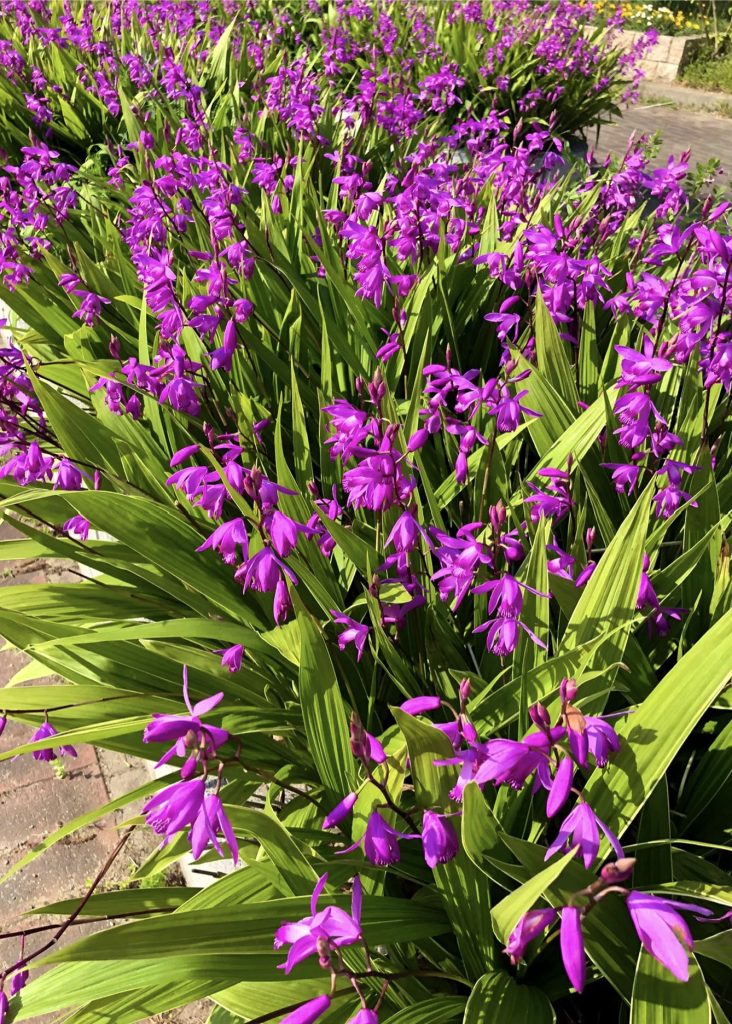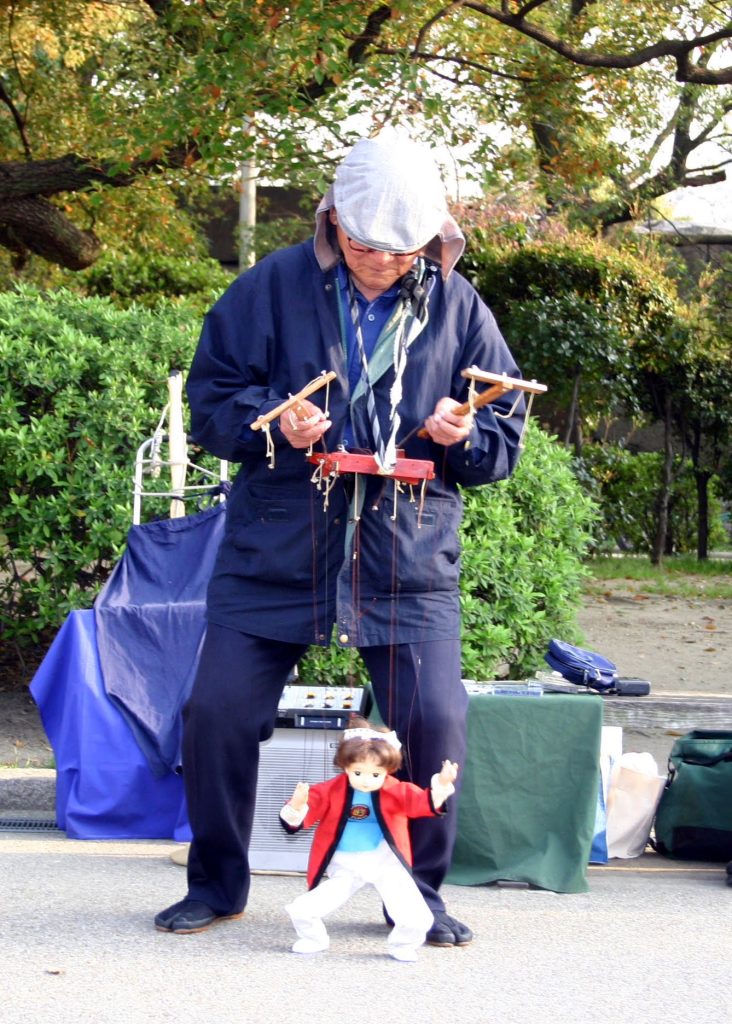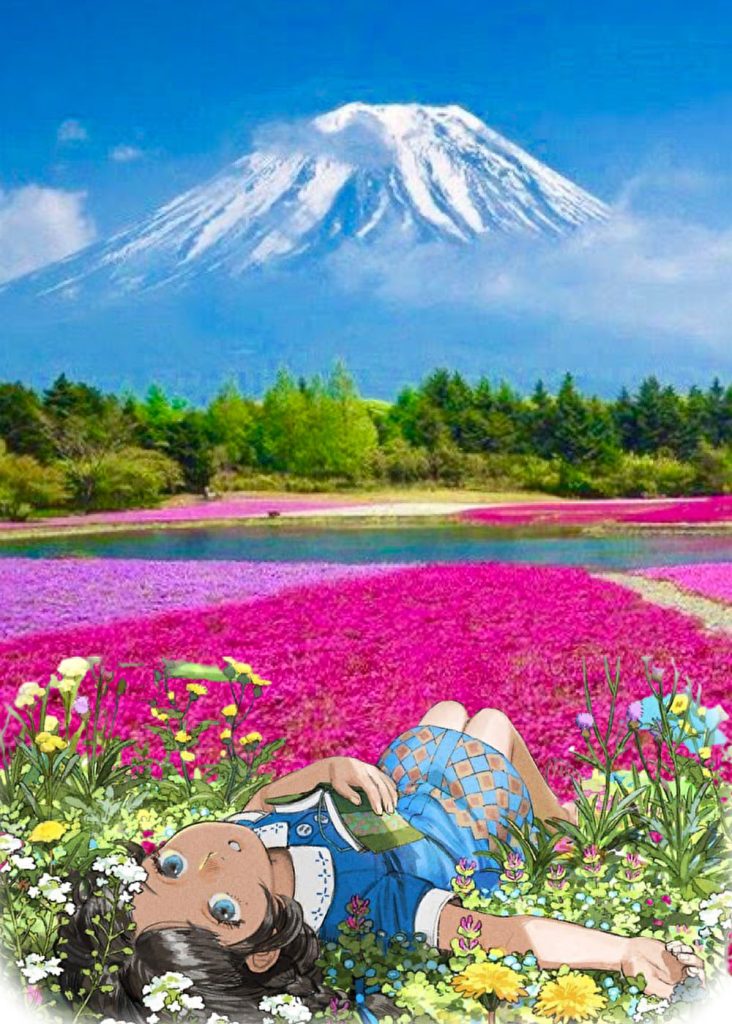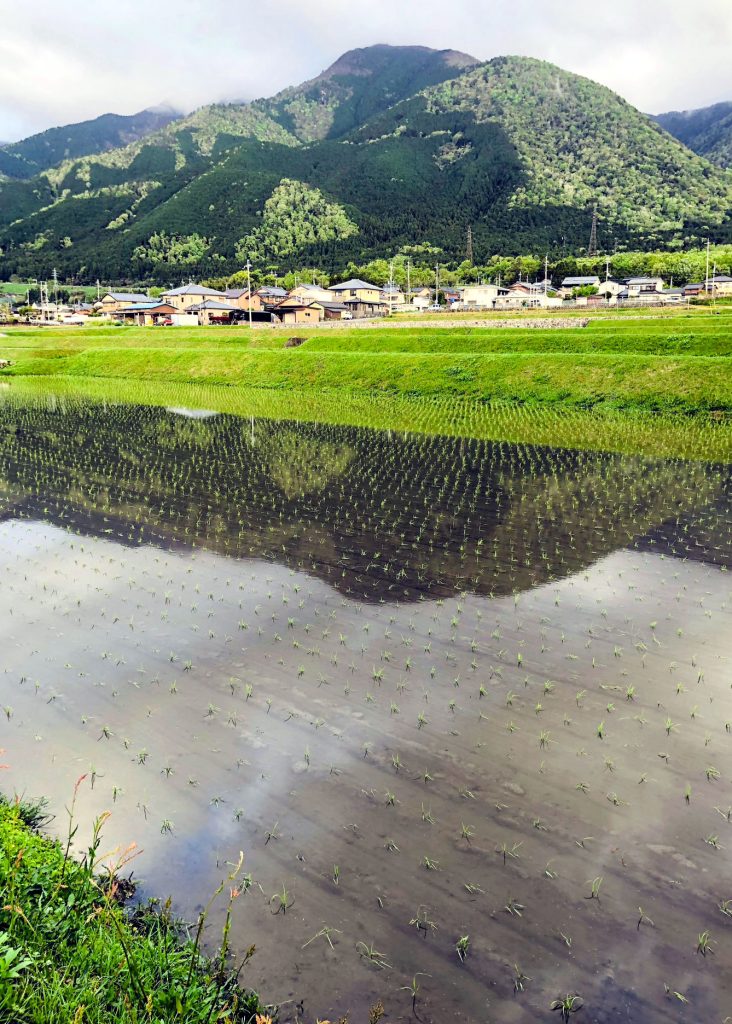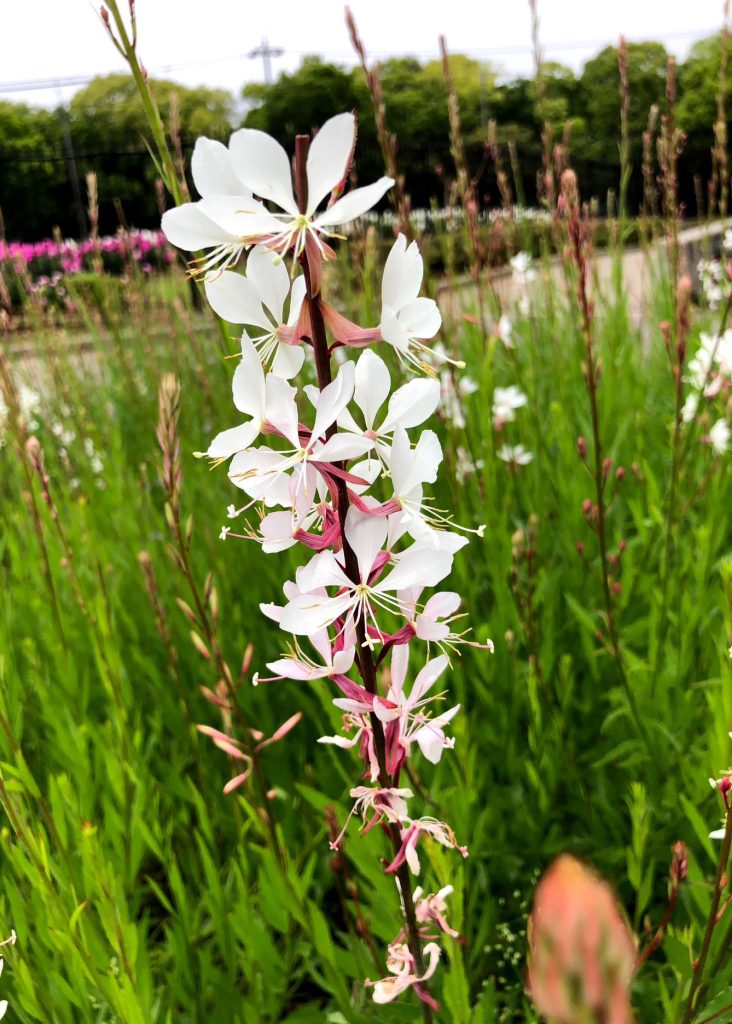
As soon as you leave the Shakuyaku garden, there are pure white flowers swarming like a group of white butterflies right in front of you. They are swaying gracefully in the occasional May breeze. When I took a picture with my smartphone and researched it, I found out that the flower is called Gaura, a plant that is native to Texas and Louisiana in the United States, grows to a height of 90-150cm and blooms from May to October. It is said to have been introduced to Japan in the mid-Meiji era, and was named “Hakuchousou” (white butterfly flower) because its appearance resembles that of a flying butterfly. Although each flower only lasts about three days after blooming, it can be enjoyed for a long time from early summer to autumn because it blooms one after another. Despite its delicate appearance, it is a very strong plant that can withstand both heat and cold, and its optimal temperature for growth is 15-25°C. It is said to be able to tolerate even -10°C in its native North America, where it is also called Bee blossom.
芍薬園を出てすぐ、目の前に白いチョウが群がっているかの様な真っ白な花が咲いています。時おり吹く五月の風にしなやかに揺れています。スマホで撮って調べてみるとガウラという花です。アメリカ合衆国のテキサス州やルイジアナ州に自生する植物で、草丈は90~150cm、開花期は5~10月とあります。日本へは明治時代中ごろに入ったといわれ、花の姿が蝶の飛んでいる姿に見えることから「ハクチョウソウ(白蝶草)」と名付けられました。ひとつひとつの花は咲いてから3日ほどで散ってしまいますが、初夏から秋の長い期間、次から次に花を咲かせていくため、長い間観賞することができるそうです。可憐な姿には似合わず、とても強い植物で、暑さにも寒さにも強く、生育適温は15〜25℃ですが、原産地の北アメリカではマイナス10℃でも耐えるとされています。現地でもBee blossomと呼ばれているそうです。


